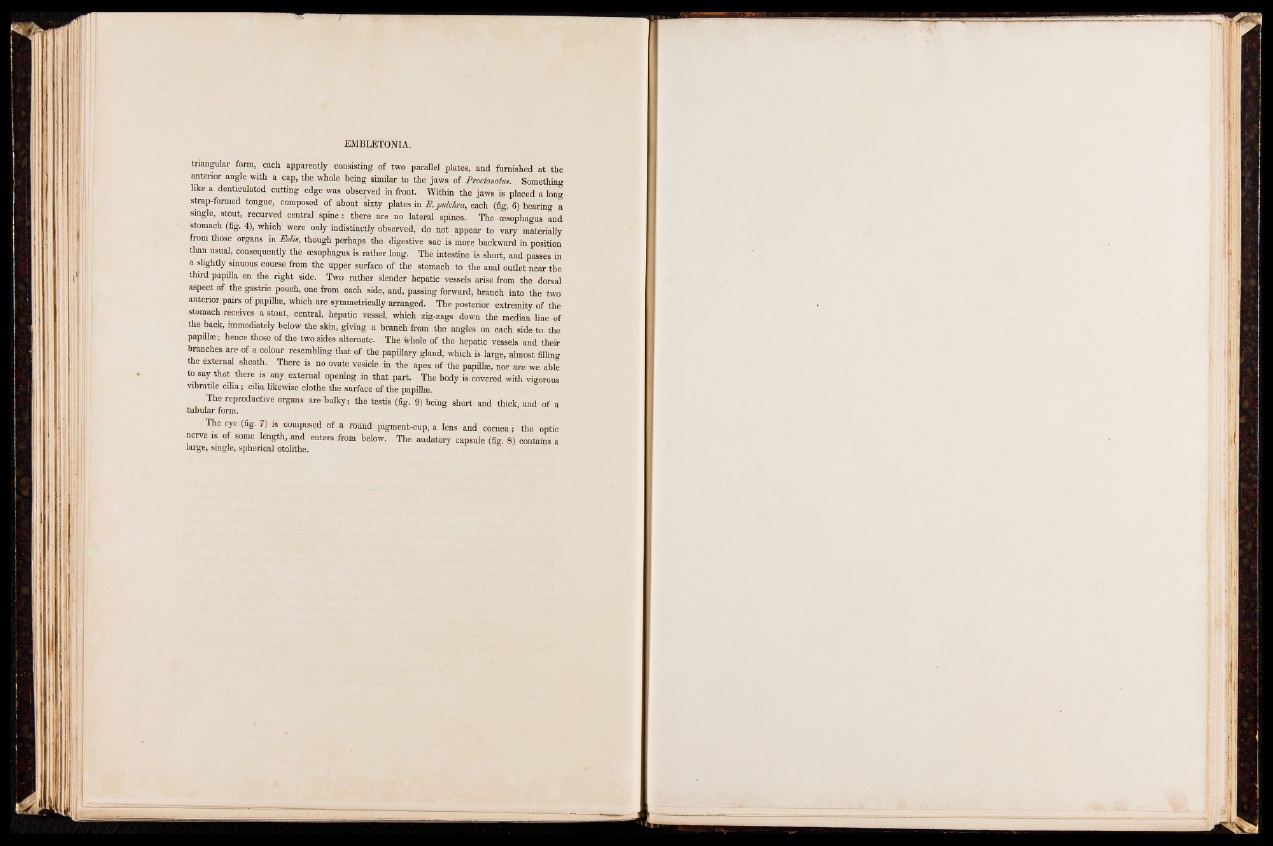
EMBLETONIA.
triangular form, each apparently consisting of two parallel plates, and furnished at the
anterior angle with a cap, the whole being similar to the jaws of Prodmotm. Something
like a denticulated cutting edge was observed in front. Within the jaws is placed a long
strap-formed tongue, composed of about sixty plates in B. pulchra, each (fig. 6) bearing a
single, stout, recurved central spine: there are no lateral spines. The oesophagus and
stomach (fig. 4), which were only indistinctly observed, do not appear to vary materially
from those organs m Eolis, though perhaps the digestive sac is more backward in position
than usual, consequently the oesophagus is rather long. The intestine is short, and passes in
a slightly sinuous course from the upper surface of the stomach to the anal outlet near the
third papilla on the right side. Two rather slender hepatic vessels arise from the dorsal
aspect of the gastric pouch, one from each side, and, passing forward, branch into the two
anterior pairs of papilla:, which are symmetrically arranged. The posterior extremity of the
stomach receives a stout, central, hepatic vessel, which zig-zags down the median line of
the back, immediately below the skin, giving a branch from the angles on each side to the
papilla:; hence those of the two sides alternate. The whole of the hepatic vessels and their
branches are of a colour resembling that of the papillary gland, which is large, almost filling
the external sheath. There is no ovate vesicle in the apex of the papillae, nor are we able
to say that there is any external opening in that part. The body is covered with vigorous
vibratile cilia; cilia likewise clothe the surface of the papillae.
The reproductive organs are bulky; the testis (fig. 9) being short and thick, and of a
tubular form.
The eye (fig. 7) is composed of a round pigment-cup, a lens and cornea; the optic
nerve is of some length, and enters from below. The audatory capsule (fig. 8) contains a
large, single, spherical otolithe.